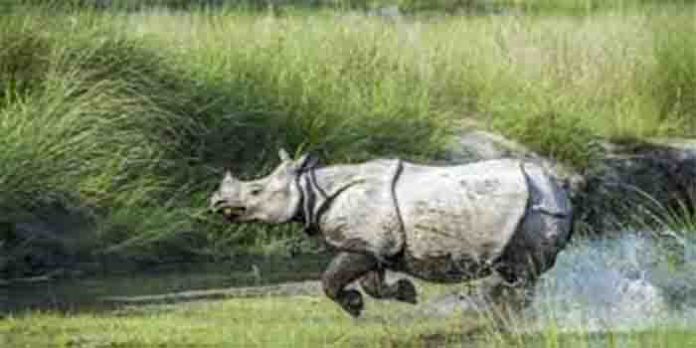Nepal’s population of endangered one-horned rhinoceros has grown by more than a hundred over the past six years, officials said, with campaigners hailing the increase as a conservation “milestone”. Following the population increase in recent decades, the rhino’s status has improved from endangered to vulnerable.
According to the results of the latest census, Nepal’s rhino population has risen to 752, from 645 in 2015. Nepal is among only a few countries where greater one-horned rhinos are found. Of the total number of rhinos, more than 90% live in the Chitwan National Park, which is also home to tigers, elephants, leopards and Gangetic gharials (fish-eating crocodiles). The animal was close to extinction in the last century, and its revival in Nepal and India is regarded as one of the greatest conservation success stories in Asia. Thousands of one-horned rhinos once roamed the southern plains, but rampant poaching and human encroachment on their habitat reduced their numbers to around 100 in Nepal in the 1960s. Since 1994, the Himalayan nation has conducted a rhino census once every five years, as authorities stepped up their efforts to boost population numbers for the species listed as vulnerable by the International Union for the Conservation for Nature.
Around 350 experts and forest department officials travelled deep into the forest for about three weeks to tally the rhinos based on a visual headcount. The estimates are based on unique identifying features like sex, size, horn, ear shapes and skin folds.






















